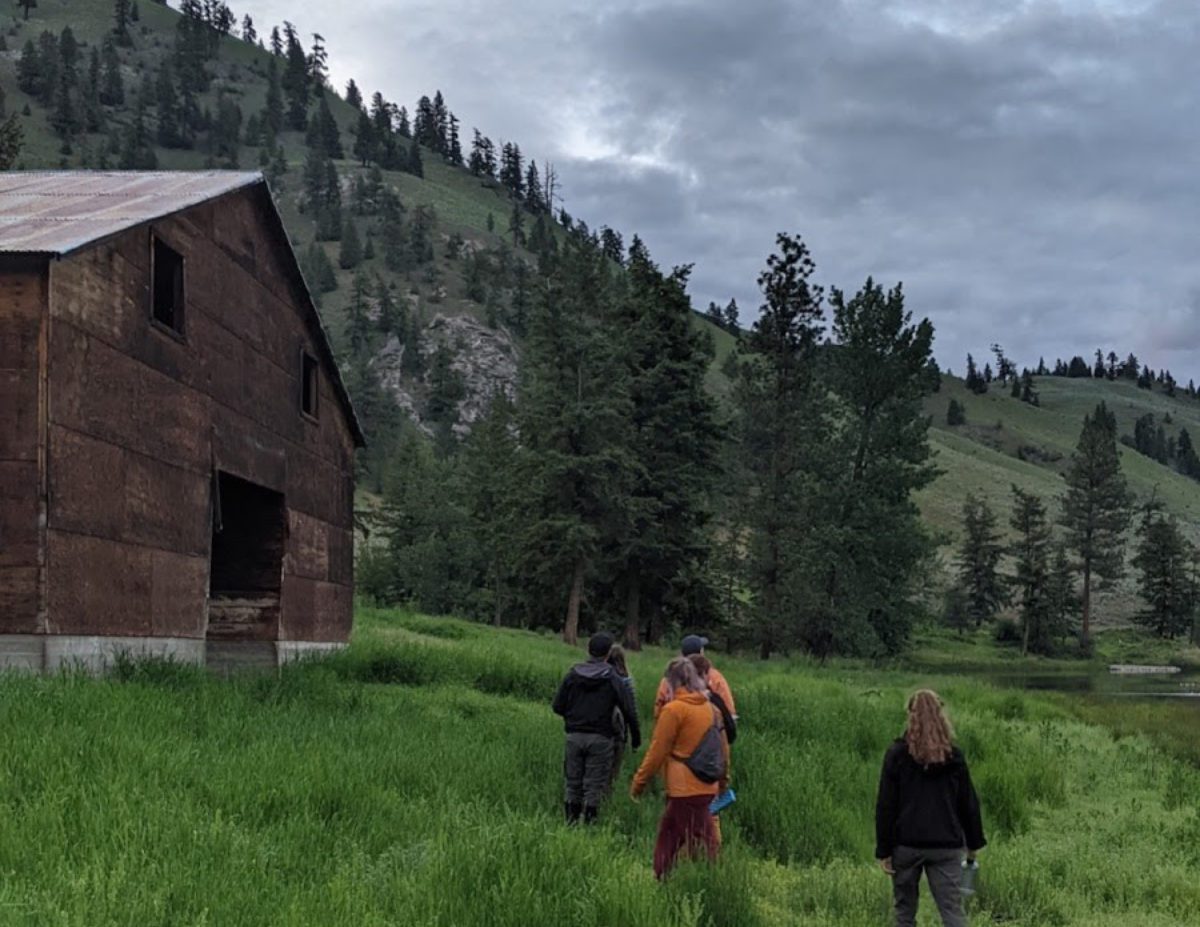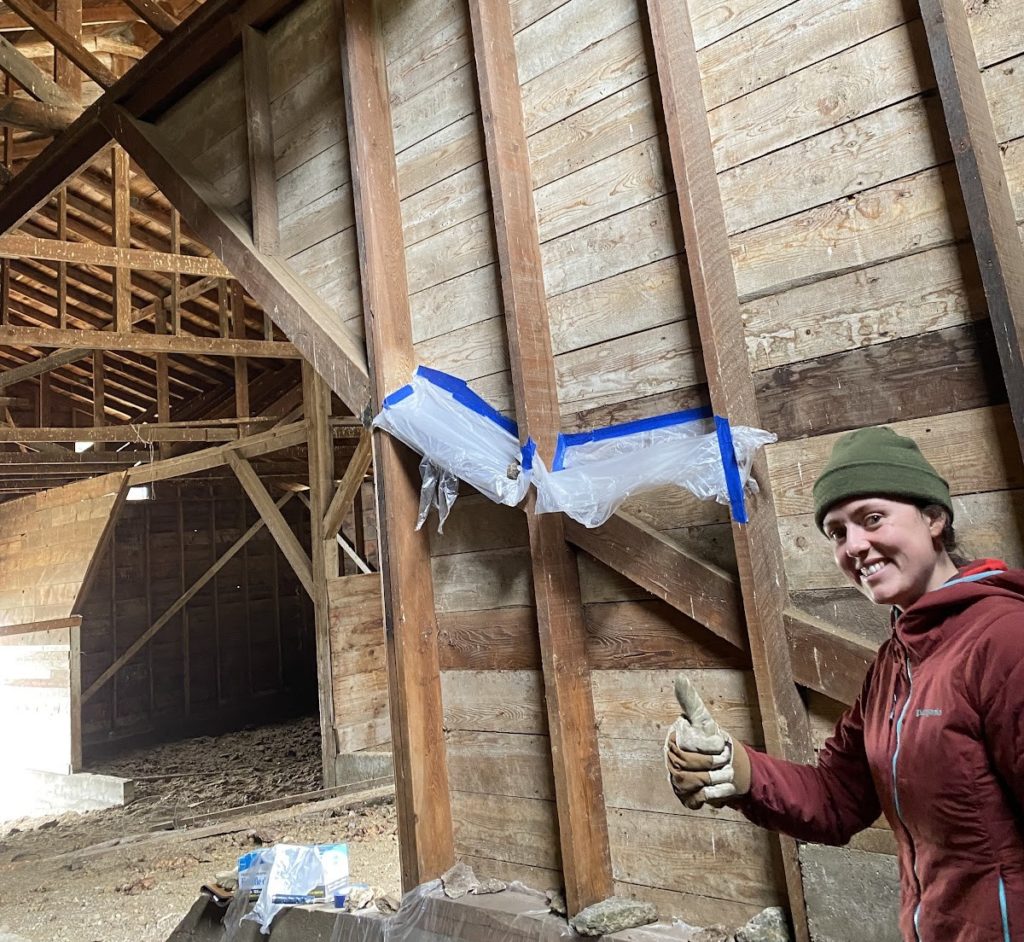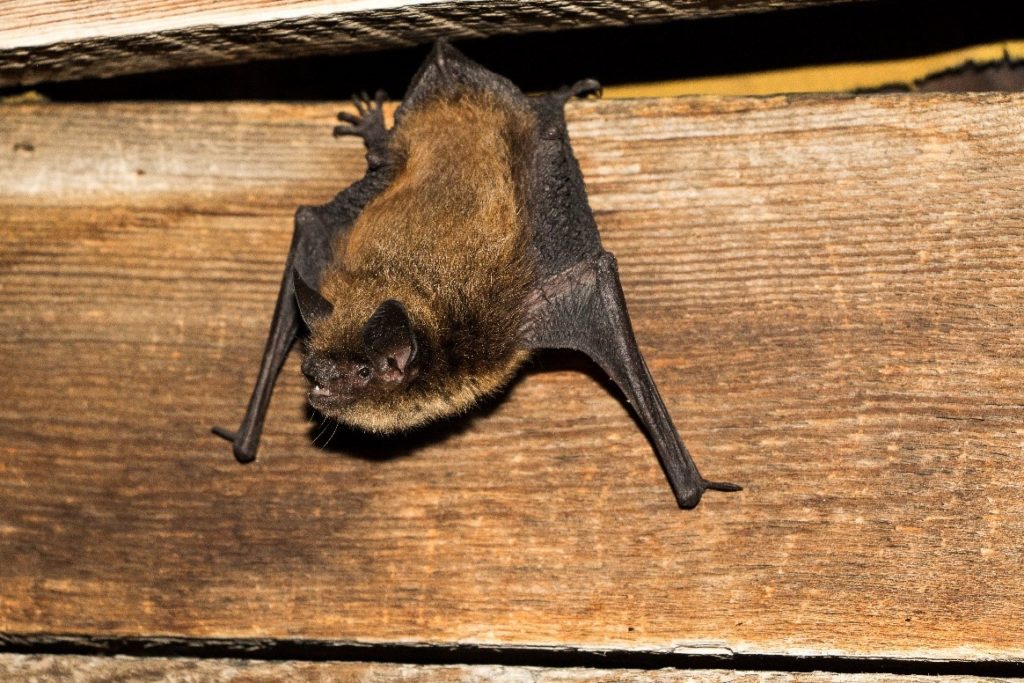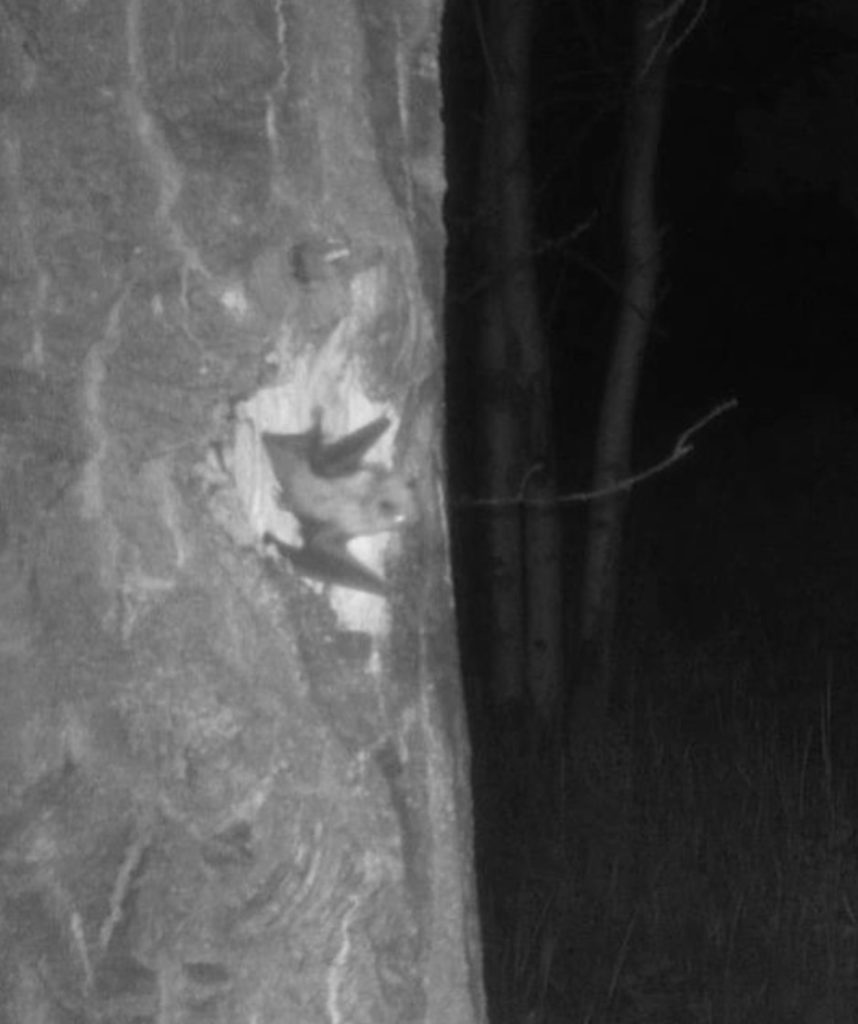
By Alex Thomson, Okanagan Field Technician
Warning: Bats are wild animals and should only be handled by trained professionals like our Conservation Field Crew members. Please do not attempt to handle bats or seek out nests on your own.
The Nature Trust likes to go to bat for bats!
Just before Halloween came Bat Week here in BC, a time to celebrate the world’s only flying mammal. Fifteen different species of bats call the Okanagan home, more than any other place in Canada. The Nature Trust of BC does lots of work to celebrate this bat biodiversity, especially through our field work in the Okanagan.
Over the past several years, the Okanagan field crews have been conducting bat counts on our properties.
In the White Lake Basin Biodiversity Ranch, an old cow barn overlooks Horn Lake. It creates a perfect roosting spot for Little Brown Myotis bats. This little brown bat – identified by its small stature and glossy brown fur – is one of the more endangered species in North America. Protecting it is the focus of many of our conservation efforts.

The crew meets close to sundown and hikes several kilometres to the barn. On location, each person receives a tally counter and stakes out a barn opening to observe. Once settled onto the cold and rocky ground around the barn, the waiting game starts. The tension is high as the first flurries of movement streak across the sky. Swallows – also roosting in the barn roof – enter and exit to skim the surface of the lake in search of insects. Just as it seems too dark to count anything, the bats emerge. Bats in the hundreds, flying out every window and door of the barn. Each person strains their thumb to click their camera as fast as humanly possible. For the next thirty minutes there is no time to think, just count and click. When it’s all over, there’s a silence that falls over everyone in the near-complete darkness, as they process the spectacle that they just witnessed. On the walk back to the trucks, the Crew brims with so much excitement that many forget that they’re past their bedtime.

Photo: BC Community Bat Program
These bat counts give researchers one more tool to help identify White-nose Syndrome, a fungal disease recently introduced to North America that has led to Little Brown Myotis being listed as Endangered in Canada. The disease significantly affects Eastern Canada, killing millions of bats and is spreading towards British Columbia – it has been identified in Washington State. By conducting bat counts at roost sites, biologists are able to get a good idea of how populations vary from year to year. To add to these counts, guano samples collected at the same sites get sent off to a lab and tested for White-nose Syndrome.

To help protect bats, Crew Lead Katelyn Michaud and I were trained by the BC Community Bat Program to be Bat Ambassadors. Bat Ambassadors interact with their local communities to promote bat conservation, correct bat misconceptions, conduct bat counts, deliver bat educational programs, and promote bat-friendly communities. The Crew found it very rewarding to participate in the bat counts and educate people in the community about the importance of protecting bats.
To learn more about the bats that we have in BC, go to BC Community Bat Program’s website!
Editorial Note: November is Philanthropy Month here at The Nature Trust of BC in the lead-up to Giving Tuesday, an international day of philanthropy in which people around the world give back. We are participating this year by raising funds to support our fantastic Conservation Field Crews. On November 29th, donate to BC conservation work and supporting nature-based solutions.
